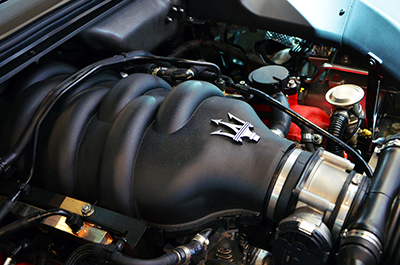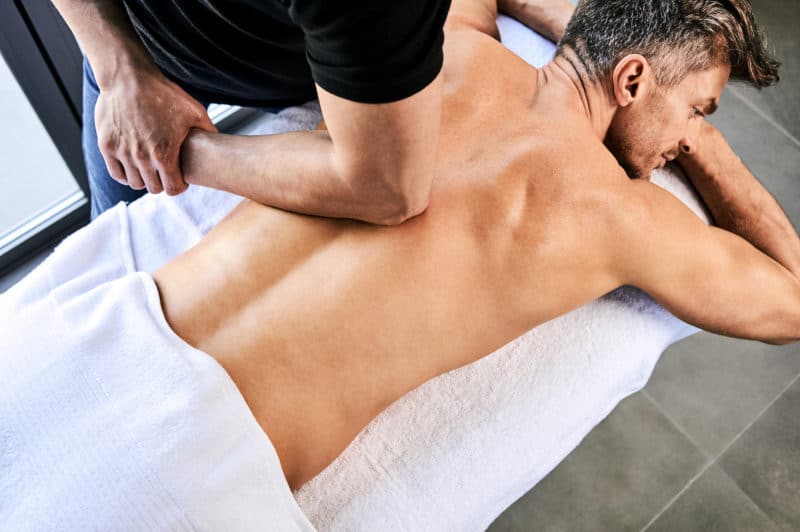As an athlete playing padel, part of my routine is massage therapy. I’ve already written about my foam rolling routine and TENS machine that are my daily way of keeping my muscles massaged, but of course, there is no substitute for real massage sessions with a qualified therapist.
Getting frequent massages might seem to be an unnecessary luxury at first glance, but I’ll show you in this article why it’s not.
Here are the top reasons why massage should be part of every serious athlete’s routine:
- Massage can reduce injuries
- Massage is beneficial to more than muscles
Massage Can Reduce Injuries
Getting injured is every athlete’s worst fear. Injuries impair performance, delay training and conditioning schedules during recovery, are costly to treat, and, most of all, injuries hurt.
Dealing with pain and limited mobility after an injury is exhausting, frustrating, and worth the measures necessary to avoid an injury from happening.
Plus, over time, injuries take their toll on the body. Most of the time, damaged tissue heals, but when muscles are continually taxed to their max through high-performance athletics, the odds increase that an injury, especially a recurring one, will result in a permanent condition.
Massage therapy has come a long way. From spa treatment to relaxation therapy; to specialized therapies, such as sports massage and prenatal massage; and, currently, according to recent research, massage therapy is making headway in preventative medicine, such as preventing injuries in athletes.
As recently as May, 2016, Oxford University research suggests that massage therapy may be beneficial to individuals experiencing pain. Pain is multi-dimensional and may be better addressed through a holistic, biopsychosocial approach. Massage therapy is commonly practiced among patients seeking pain management; however, its efficacy is unclear. This research study is the first to rigorously assess the quality of massage therapy research and evidence for its efficacy in treating pain, function-related and health-related quality of life outcomes across all pain populations.
Based on the evidence, massage therapy, compared to no treatment, should be strongly recommended as a pain management option. Massage therapy is weakly recommended for reducing pain, compared to other sham or active comparators, and improving mood and health-related quality of life, compared to other active comparators.
Researchers at McMaster University reported in 2012 that massage following an intense workout actually causes muscles to enlarge and grow new mitochondria. Mitochondria are the powerhouses of our cells and are responsible for converting nutrients into useful energy. Increasing mitochondria can improve endurance performance by increasing the rate that muscles utilize oxygen.
For an athlete, energy is everything.
To the body, oxygen is everything.
For their study, the researchers followed 11 men in their twenties.
On their first visit, the men’s exercise capacity was assessed. Two weeks later, the men cycled on a bicycle for more than 70 minutes, to a point of exhaustion when they couldn’t cycle any more. They then rested for 10 minutes.
While resting, a massage therapist lightly applied massage oil to both legs, and then performed massage for 10 minutes on one leg using a variety of techniques commonly used in rehabilitation.
Muscle biopsies were done on both legs (quadriceps) and repeated 2.5 hours later. Researchers found reduced inflammation in the massaged leg.
The results hint that massage therapy blunts muscle pain by the same biological mechanisms as most pain medications and could be an effective alternative.
Surprisingly the research also proved one oft-repeated idea false: massage did not help clear lactic acid from tired muscles.
The McMaster University study also found that massage therapy increases the range of motion in muscles and decreases recovery time between workouts or athletic events.
Massage for sports injuries not only concentrates on existing injuries, but can also help prevent injuries. Massage before conditioning training helps to prevent injuries and should be administered after a warm-up session. Massage can also help to prevent common injuries when administered after a training session, as it helps to return the muscles to their relaxed state.
The better we feel, the better we heal. For muscles, too.
Massage is Beneficial to More Than Muscles
Muscles might be the richest benefactors of a massage, but, most people report a feeling of pure relaxation, reduced anxiety, enhanced attentiveness, and improved mood following a massage.
Athletes may find an edge in these psychological benefits, making massage a double-duty treatment; a mind and body therapy. That’s a lot of bounce for your ounce!
Various bodies of research compiled by the National Center for Biotechnology Information indicate that massage therapy:
- Reduces heart rate.
- Lowers blood pressure.
- Reduces recovery time after an injury.
- Rehabs an injury.
- Lowers anxiety.
- Improves mood.
- Increases blood flow throughout the body, bringing vital oxygen and nutrients all over.
- Relieves muscle pain and tension.
- Improves connective tissue healing, which promotes muscle elasticity.
- Stabilizes cortisol levels (a stress hormone, similar to adrenaline).
- Improves muscle flexibility, which reduces and prevents injury.
And, as if all these benefits weren’t enough, research published in the International Journal of Neuroscience suggests that massage therapy improves the quality of sleep.
Do you want to drive a Maserati or a Ford Focus?
The Ford Focus is a fine vehicle, designed for economy and low maintenance. It’s a clean, solid ride.
Then, there’s the Maserati. A masterfully engineered Italian machine, designed for high-performance, power and superior luxury. While it’s a bit pricey for most of us, its sticker price is not the only factor to consider when it comes to owning a Maserati.
 High maintenance
High maintenance
A Maserati is an exceptionally high-maintenance vehicle, known to be expensive to maintain and repair; much more so than other cars in its class. Ask a Maserati owner why they spend so much time and money maintaining a car whose value and performance could be found elsewhere and their response will echo that of designer and car collector, Ralph Lauren, “You can enjoy both the beauty of the machine and the journey it takes you on.”
High-performance output requires high performance input, in both cars and bodies. Athletes are the high-performance models of the human body. In order to keep up with the substantial demands required of being optimally fit, athletes must stick to an impeccable diet regimen, maintain quality and consistent rest habits, and adhere to regular exercise, training and conditioning programs.
Athletes also need superior health and wellness strategies to sustain optimal performance by their bodies. By having regular massage, athletes can keep their muscles healthy, improve their flexibility, maintain relaxation, and have a better sleep cycle.
Research compiled by NCBI, states, “Athletes and coaches are constantly fine tuning their training strategies in order to develop a competitive edge. The use of therapeutic modalities, such as thermal agents, electrical stimulation, and massage are often performed for this purpose. “
For most athletes, professional or the weekend warrior brand, enjoying less muscle stiffness, preventing injury, improving relaxation and well-being are reasons enough to enjoy a regular massage program. For some, it’s also about giving the Maserati its due.
Let’s address a few common questions:
How often should I get a massage?
This all depends on the demands you put on your body and how your body reacts to those demands. When Robert was working for the Brisbane Lions AFL team, the players were getting two massages per week during the playing season. Most elite athletes get at least one massage per week. For most amateur athletes who still take their sport and training seriously or regular gym-goers, once a week to once a fortnight is recommended. For most people who do regular light exercise once every two, three or four weeks is usually sufficient.
We offer a range of pre-paid massage packs; to find out how you can buy in bulk and SAVE please click here.
Please note: If you are recovering from an injury then more frequent regular sports/remedial massage targeting the injured area is recommended until the injury has healed and you are back to pain-free full range of movement. This is particularly the case if you are going to continue training and competing and unable to give your injury sufficient time to recover.
Should I get sports massage before or after I compete or train?
The short answer is: you should receive sports massage both before and after you train.
After training or competing it is best to get a sports massage within 48 hours; this reduces your recovery time. You can however receive sports massage once your heart rate has reduced and you have had time to re-hydrate.
One or two days before the race is a good time to receive sports massage or even the morning of the race as long as it is not too deep. A massage the morning of the race is more part of your warm up so ideally a lighter and more vigorous approach is best.
Two to four days before you compete loosens your muscles and helps your mind and body feel fresher, more relaxed and ready to compete. If sports massage is performed more than four days before it can be deeper, helping you to get rid of restricted and/or tight areas of muscle.
What’s the difference between sports massage and deep tissue massage?
Sports massage is ideal post-exercise; deep tissue massage is a technique that can be used as part of sports massage to assist in injury recovery and the removal of scar tissue. Deep tissue massage is more than just a firm massage.
In terms of firmness, sports massage is usually done at a medium pressure post-event, fairly light pre-event and fairly firm during training in a similar way that a long distance runner may train at a high level leading up to an event, at a moderate level tapering off pre-event and fairly lightly post-event for optimum recovery.
I’m not an athlete, would sports massage be suitable for me?
Sports massage is ideal for anyone who exercises: from regular beach walkers to working out at the gym once a week. Sports massage is also ideal for people who have a physically demanding job or for anyone who suffers from soft tissue (muscle) tightness or pain.

